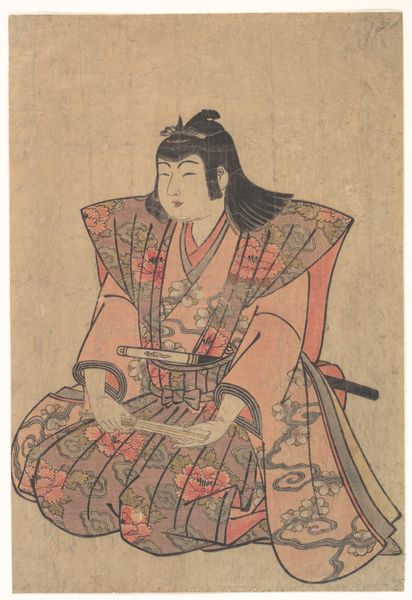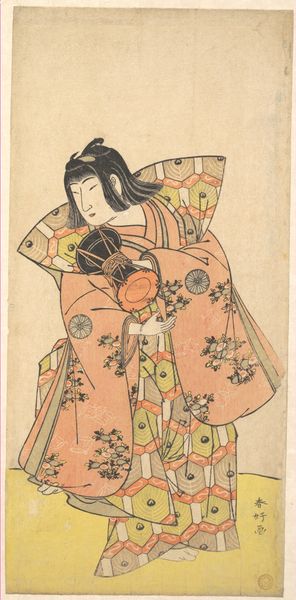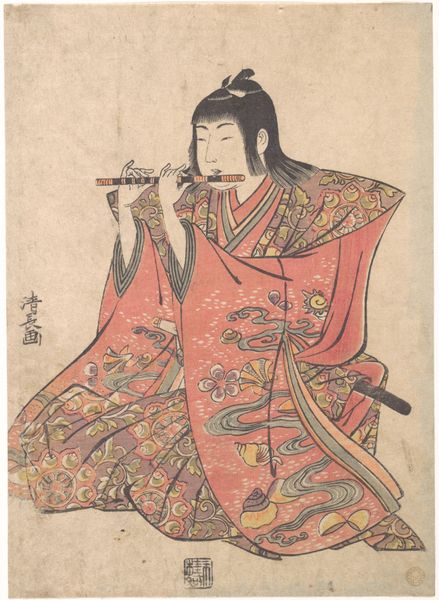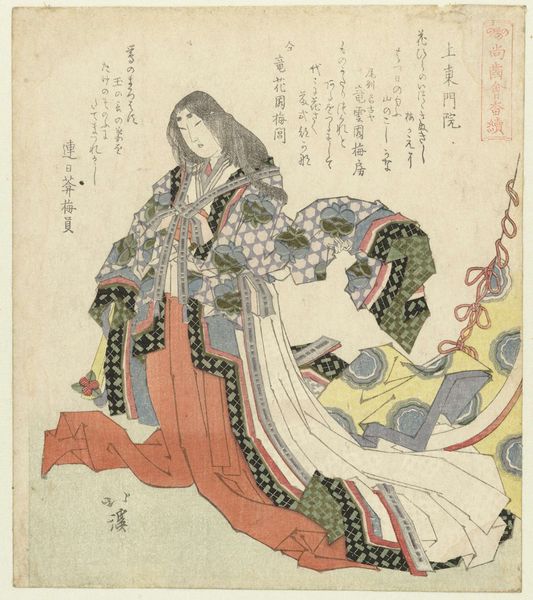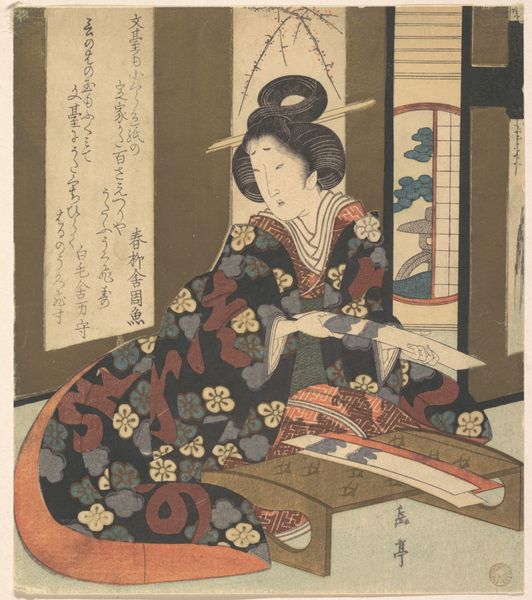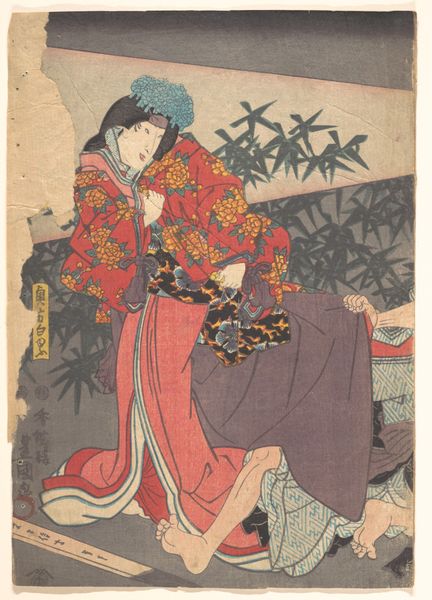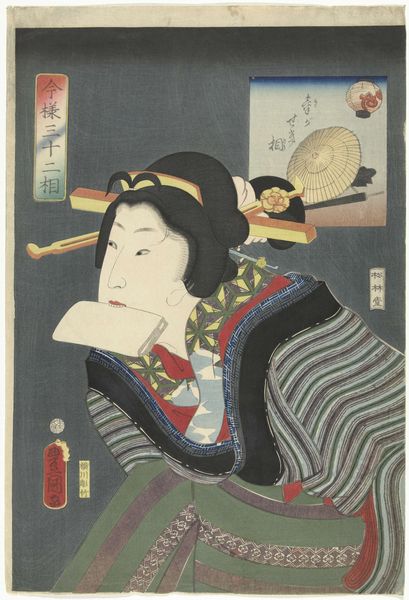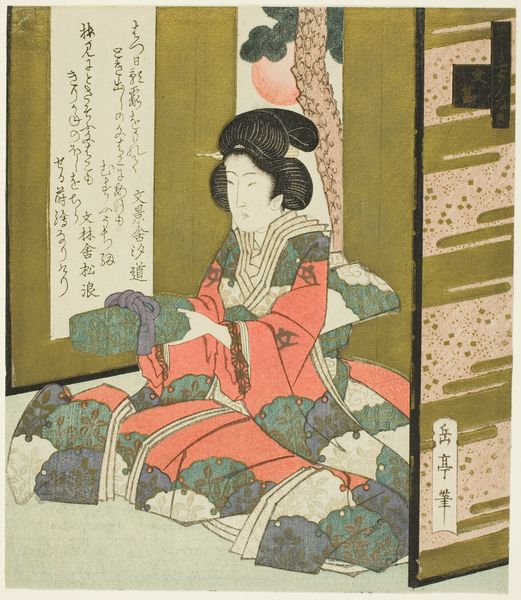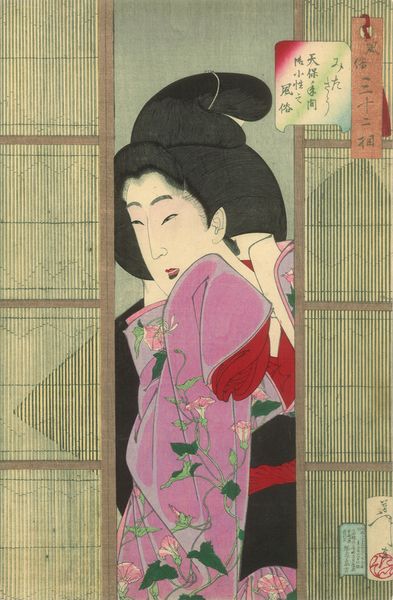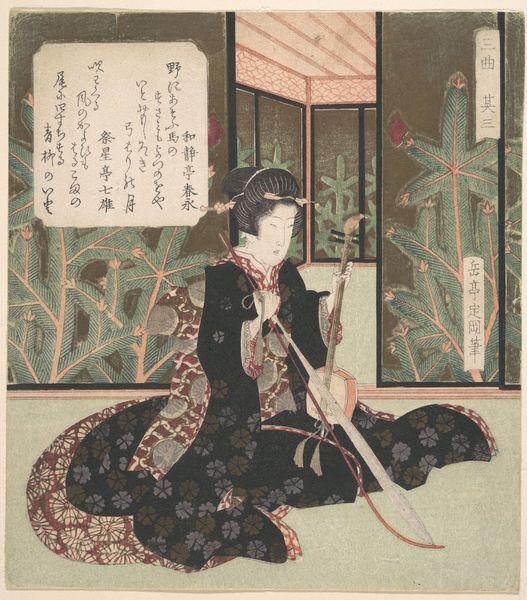
print, textile, woodblock-print
#
portrait
# print
#
asian-art
#
textile
#
ukiyo-e
#
woodblock-print
#
watercolour illustration
Dimensions: height 212 mm, width 184 mm
Copyright: Rijks Museum: Open Domain
Curator: Here we have "De dame Ginjo", a woodblock print by Yashima Gakutei, dating back to around 1823. It’s a beautiful example of ukiyo-e portraiture currently held at the Rijksmuseum. Editor: The first impression is one of subtle melancholy. The soft watercolor palette creates a dreamlike setting for this refined woman and her instrument. The textile seems to mimic flower petals—it makes her the art within art. Curator: Note how the composition meticulously balances color and line. Gakutei masterfully uses flat planes of color—observe the kimono, with its intricate patterning—to construct spatial depth. The details in the woman’s garment invite careful study of texture and surface. Editor: And her stillness! It is not just physical—it emanates from her soul. It makes me think about the symbolism of music itself: how, in many cultures, music symbolizes emotion, memory, even a connection to the divine. Perhaps she embodies all three. Curator: Semiotically speaking, the Koto instrument operates as a signifier of feminine accomplishments and aristocratic upbringing, especially during the Edo period. Consider also the significance of her coiffure— a signifier of her status and composure. Editor: Indeed, the style is particularly fascinating as she looks forlorn and reflective. I read her stance and composure not only as indicators of status but perhaps, an internalization of unspoken feelings as expressed by her poetry and choice of music. Curator: The subtle nuances Gakutei creates with so few elements invite careful reflection on form and presentation. How shape and structure function, rather than simply what they may represent, are truly compelling. Editor: Ultimately, the work evokes both cultural memory and emotional depth—revealing the power of symbols to resonate across centuries. We begin to not just see her beauty, but how this portrayal helps her exist beyond 1823, in memory.
Comments
No comments
Be the first to comment and join the conversation on the ultimate creative platform.
